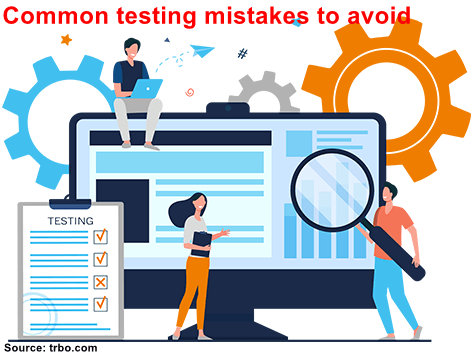
Common Mistakes to Avoid in Software Testing
- 0
Software testing is a critical part of the software development process, as it helps ensure that the final product is free of bugs and meets the expectations of its users. However, there are some common mistakes that many software testers make that can compromise the quality of the testing process and ultimately the quality of the software itself. In this article, we will discuss some of these common mistakes and provide tips on how to avoid them.
1. Testing Without a Clear Strategy
One of the biggest mistakes that software testers can make is to start testing without a clear strategy in place. Without a well-defined testing plan, it can be easy to miss critical areas of the software that need to be tested, leading to a higher likelihood of bugs slipping through the cracks. To avoid this mistake, it is important to create a detailed testing plan before starting the testing process. This plan should outline the scope of the testing, the test cases to be executed, and the expected outcomes.
2. Not Testing Across Different Devices and Platforms
Another common mistake in software testing is to only test the software on one device or platform. In today’s digital age, software is expected to work seamlessly across a wide range of devices and platforms, including desktops, laptops, tablets, and smartphones. By only testing on one device or platform, testers run the risk of missing critical bugs that may only appear on other devices. To avoid this mistake, it is important to test the software across a variety of devices and platforms to ensure its compatibility.
3. Ignoring Edge Cases
Edge cases refer to scenarios that are on the outer edge of what is considered normal behavior for the software. These edge cases can often expose bugs and vulnerabilities that may not be apparent during regular testing. Ignoring edge cases can lead to the software failing in unexpected ways once it is released to users. To avoid this mistake, it is important to consider and test for all possible edge cases during the testing process.
4. Insufficient Regression Testing
Regression testing is the process of retesting the software after changes or updates have been made to ensure that the new code has not broken any existing functionality. One common mistake in software testing is to not perform sufficient regression testing, leading to the introduction of new bugs into the software. To avoid this mistake, it is important to prioritize regression testing and to automate as much of this process as possible to ensure thorough coverage.
5. Failing to Document and Communicate Bugs
Another common mistake in software testing is failing to properly document and communicate bugs to the development team. Without clear and detailed bug reports, developers may have a hard time reproducing and fixing the issues, leading to delays in the release of the software. To avoid this mistake, it is important to document bugs as soon as they are discovered, including steps to reproduce the issue and any relevant screenshots or logs. Additionally, clear communication with the development team about the bugs is essential to ensure that they are addressed in a timely manner.
Conclusion
In conclusion, software testing is a crucial part of the software development process, and avoiding common mistakes can help ensure the quality and success of the final product. By creating a clear testing strategy, testing across different devices and platforms, considering edge cases, prioritizing regression testing, and documenting and communicating bugs effectively, software testers can help deliver a high-quality software product that meets the expectations of its users.

